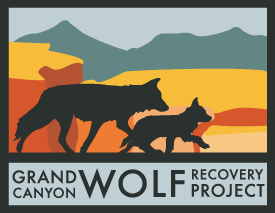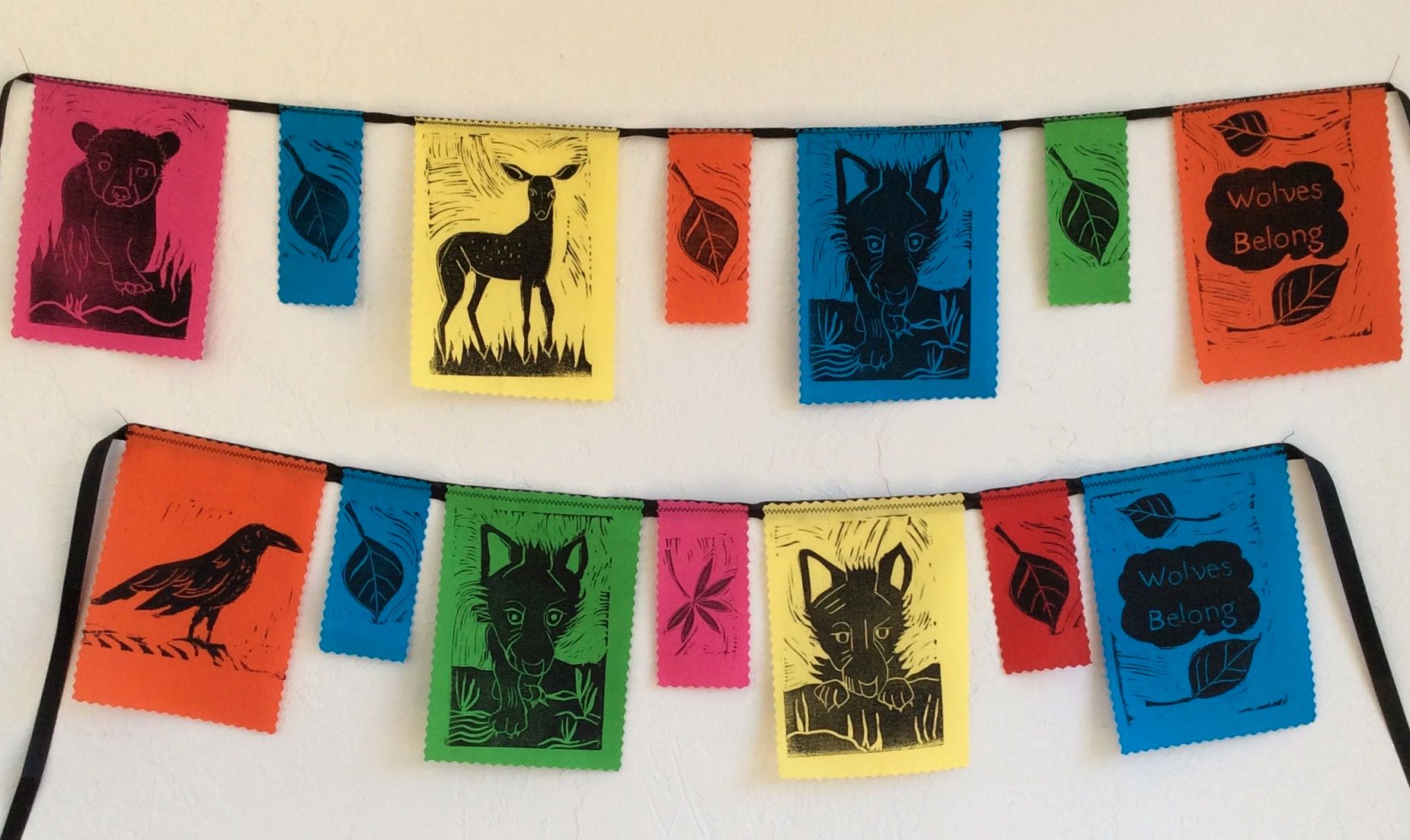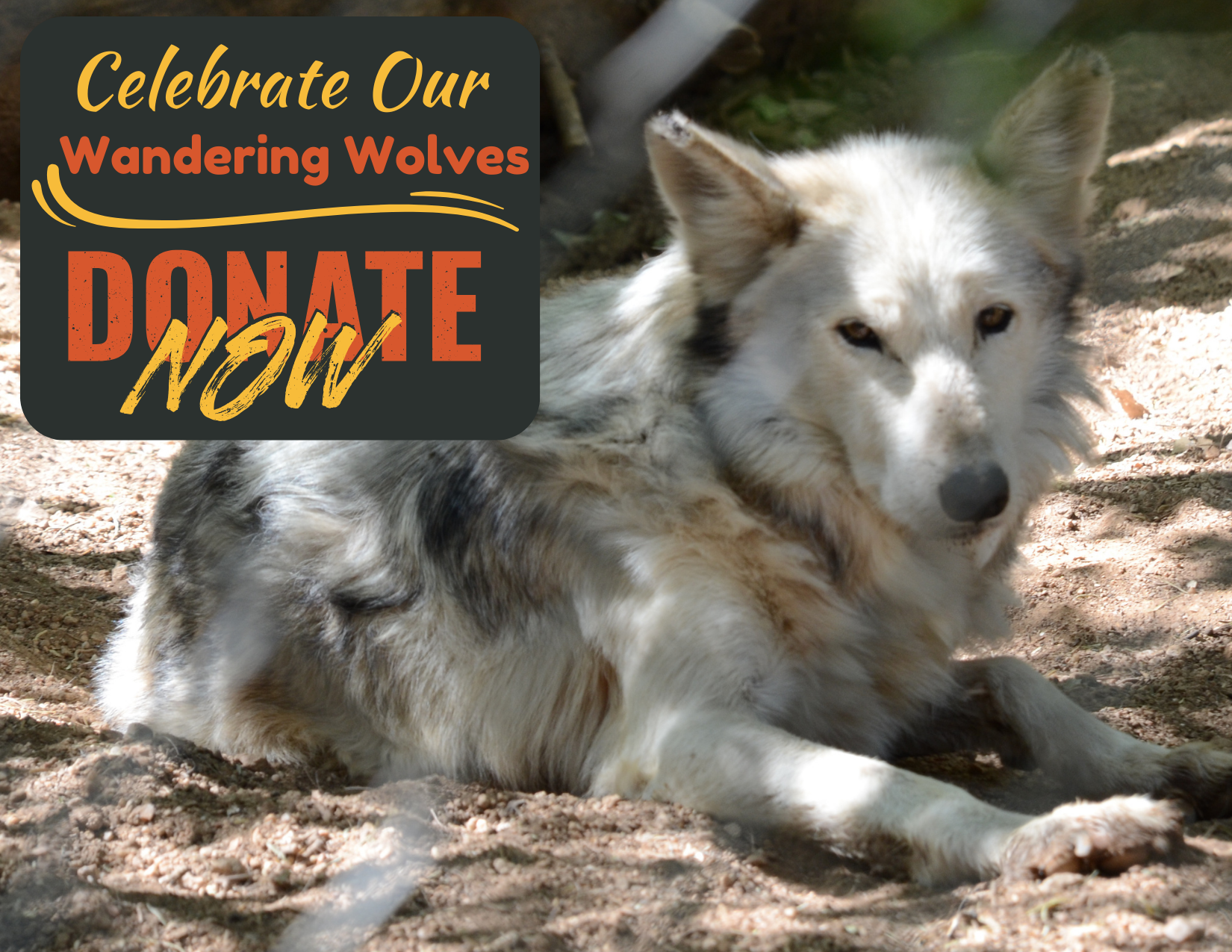Our Mission:
The Grand Canyon Wolf Recovery Project is dedicated to bringing back wolves and restoring ecological health in the Grand Canyon Region.
Our Goals:
1) Promote management policies that support wolf recovery in the Grand Canyon region.
2) Build a strong, persistent culture of support for wolves throughout the Grand Canyon region to ensure that wolves, once restored to their critical role, will continue to thrive long-term.
GCWRP Timeline:
2000: First known Mexican gray wolf (since the reintroduction program began in 1998) disperses to north of I-40, north of Flagstaff
2003 - 2004: Because of the critical ecological role played by wolves, concerned citizens and conservation leaders joined forces to form a new grassroots organization, to restore the wolf to its former range.
2005: We were officially named the Grand Canyon Wolf Recovery Project and began doing outreach programs and public events about wolves
2014: The Grand Canyon Wolf Recovery Project became a stand-alone 501(c)3 nonprofit organization
2014: Echo, the Northern gray wolf, is the first wolf to return to the Kaibab Plateau area of the North Rim of the Grand Canyon in over 80 years.
2018 – Current Day: individual Mexican gray wolves are dispersing to the Grand Canyon region of northern Arizona with more frequency.
2021: Anubis, a young GPS collared Mexican gray wolf, spent over six months in northern Arizona on the Coconino and Kaibab National Forest, having dispersed to the area twice from the core reintroduction area in eastern Arizona and Western New Mexico.
Our Three Major Campaigns:
“Howl for Wolves” in the Grand Canyon region
This campaign includes our Education & Outreach Programs, including tabling events, hosted community events, public presentations, and school programs
- 40,000+ people reached through outreach events
- 20 public presentations on wolves by invited institutions and community organizations
- Classroom presentations for 29 different schools across the region, reaching more than two thousand elementary school to college age students
- Development of a Virtual Education Program about Mexican wolves: Teatro del Lobo Mexicano puppet show
- Participation, presentations, and activities on wolves in 12 different camp programs for youth
- Outreach tables at over 35 different community events across the region, many repeated on an annual basis
- Sharing current information and education on social media
Public Events hosted by the GCWRP
Book Readings/Storytelling Events
- William Stolzenburg – “Where the Wild Things Were”
- Cristina Eisenberg – “The Wolf’s Tooth: Keystone Predators, Trophic Cascades, and Biodiversity”
- David Moskowitz – “Wolves in the Land of Salmon”
- Sunny Dooley, Navajo storyteller: “Mai Tso: The Story of Leadership and the Wisdom of the Wolf” (7 events in 2015, 2017, and 2023 in Flagstaff, Grand Canyon, Mesa, & Sedona)
Film Screenings
- Wild & Scenic Film Festival annual event in Flagstaff from 2010 to 2022, two additional screening events in Sedona in 2018 & 2019
- Hosted “Lords of Nature” film screenings at NAU and GCNP, distributed free DVDs with viewing guide to local schools
- “Green Fire” film screening in Flagstaff
- Co-produced the film "Almost Ancestors" to illustrate the parallel paths of displacement experienced by Mexican gray wolves (lobos) and indigenous peoples.
Wolf Art Exhibits
- Wolves in Art exhibits in 2010 & 2011
- No(where), Now(here) installation downtown Flagstaff 2009
- Animal Land video projections of wolves on outside of Orpheum Theater and in downtown Flagstaff 2014
- Sponsor of the Sound of Flight Mural Phase II with a large-scale wolf at the Grand Canyon on the Orpheum Theater in downtown Flagstaff 2015
- Call of the Wild mural painting events with Plan B to Save Wolves in 2018 & 2019
- Holiday Lights Parade Wolf Float in 2014, 2015, 2016
“Wolves Without Boundaries”
This campaign includes our policy related work, comments, public engagement, and grassroots organizing for wolves
- Thousands of public comments and testimonies generated in support of Mexican gray wolves and wolf recovery in Grand Canyon region
- 60+ businesses sign-on letter in support of wolf recovery in the Grand Canyon region to USFWS in 2017
- Statewide ban on Wildlife Killing Contests in Arizona in 2019, resolutions passed in City of Flagstaff and Coconino County
- Pro-ESA resolution passed by City of Flagstaff in 2021; Endangered Species Day Proclamation in 2022
- Have hosted numerous community trainings, comment writing workshops, and support events at wolf policy meetings
- Have provided interviews and media coverage on Mexican wolves in at least 16 different local, statewide, and national media outlets
- Helped lead six different rallies for wolves outside commission meetings, hearings, and at the capitol in Arizona & New Mexico
- Have attended, presented, and/or tabled at 17 different conferences to further the scientific basis of wolf recovery in the Grand Canyon region
- Coordinate meetings between wolf supporters and agency leaders and elected officials
- Submit substantive comments on every USFWS comment period for Mexican wolves going back to 2005, USFWS Forest Plan Revisions for the Coconino, Kaibab, and Apache-Sitgreaves National Forest, Grand Canyon National Park Backcountry Management Plan, and USFWS public comment periods on Northern gray wolf national delisting issues
- Organize wolf supporters to attend and speak at every AZGFD Commission meeting when wolves are on the agenda
“Paseo del Lobo”
Our field-based work for wolves and firsthand inspirational experiences in wolf habitat
- Have hosted a large-group summer camp out in Mexican wolf country for 10 years
- Over 600 participants in our campouts and hikes to learn about Mexican wolves and experience their habitat first-hand
- Hosted the Paseo del Lobo relay hike in 2012 of over 400 miles with more than 100 volunteers participating in hiking sections of the trail
- Distribute information posters on Mexican wolves when wolves are in the area





